The Maori Art is a classic traditional Pacific tribal art. The creative
styles and skilled craftsmanship yield objects of great beauty. Of the
various arts -- carving, music, dance, rock-drawing and tattooing -- wood-carving
or as the Maori says, whakairo rakau is the most important form
of art. Canoes, storehouses, dwellings, village fortifications, weapons,
domestic bowls, and working equipment were basically made of wood. Hence,
the Maori culture was also a wood culture.
Periods of Maori art merge, yet there are four distinctive eras with
characteristic features:
Archaic, Classic, Historic and Modem.
The Archaic Maori or the moa hunters were the earliest settlers and
survived on hunting, fishing. Their artwork include carvings and bone and
stone work. These works, though plain and not as elaborate, surpasses the
works of the later centuries.
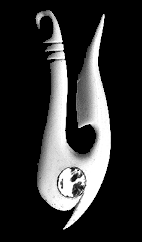

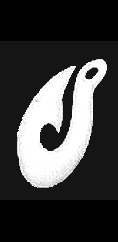
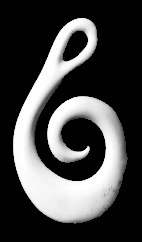


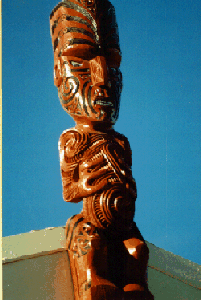
People, hand-made things and natural objects were thought to have an inner psychic force. Hence religious objects and items for worship were often hand-made. Wooden stickgods, stone crop gods were among some hand-carved objects the Maoris used. Wooden burial chests, intricately and beautifully carved were used to contain bones of the deceased. Structures of various forms were erected in memory of the dead. Some were carved wooden posts while others took the form of canoes buried deep in the earth to stand vertical. Posts were Elaborate carving can be seen in important meeting houses. The meeting house is conceived as a living being. The head is represented by a central mask below a standing figure. The arms are the ornamental boards covering the edge of the roof, often completed with fingers at the lower ends. The ridgepole is its spine, the rafters its rib cage, and the interior, its belly. The carvings are elaborate and painfully and skilfully done. Carving human figurines is another popular form of art. A distorted human figure, male or female is the most common subject in Maori carving. The head is magnified as it is the container of life's spirit. Slanted eyes and three-fingered hands are included. Common figurines include the beaked manaia, a half-bird, half-human deity.

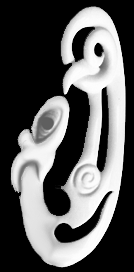
The Manaia is an ancient mythical being with a bird's head and
a human form. It is said to be
the messenger between the earthly world of mortals and the domain of
the spirits. The
Manaia is a holder of great spiritual energy and is a guardian
against evil. The Manaia can be
seen blended into many Maori designs with subtle differences between
tribes.
The marakihau, half-fish, half-human which has a tube-like tongue.
The tools used were limited to wood, stone, fibres and shells: metal
tools did not exist. Greenstone was a valuable blade material. Bones were
obtained from whales, small sea mammals, birds, dogs, and humans. Objects
made from bones were skilfully and ornately carved.